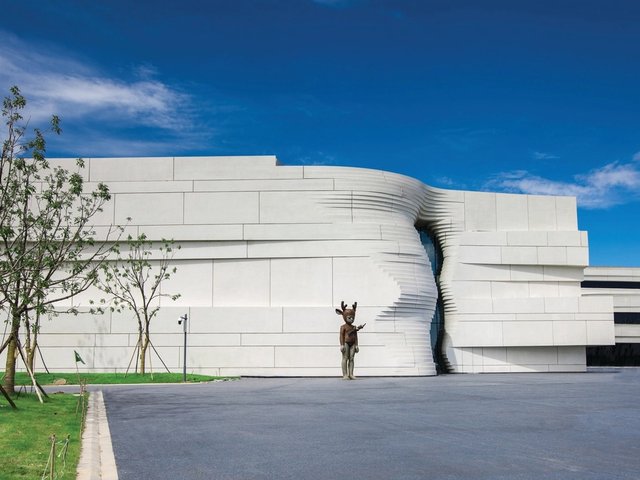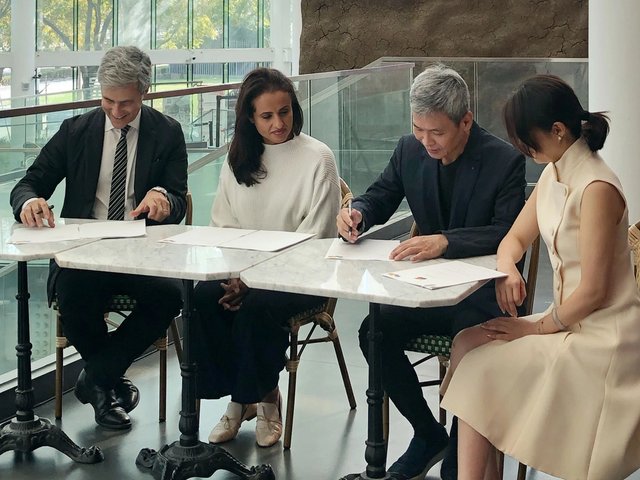China is increasingly engaging with countries with mainly Muslim populations through cultural exchanges as its government champions the creation of a new, economic “Silk Road”. Two biennials opened this autumn in the country’s far-flung western regions, which are the respective homelands of China’s two largest Muslim minorities, the Turkic Uyghurs and the more assimilated Hui. Meanwhile, the 11th Shanghai Biennale, which is due to open on 11 November (until 12 March 2017), features an unprecedented number of international artists from Muslim countries, even though China’s own Muslim minorities remain marginalised.
The third Xinjiang International Art Biennale was organised by the ministry of culture of the Xinjiang Uyghur Autonomous Region in Urumqi (8-31 October). Featuring folk and popular art, which reflect official preferences, it contrasts starkly with the global contemporary approach of the first Yinchuan Biennale (until 18 December) at the new, private MoCA Yinchuan, in the capital of the Ningxia Hui Autonomous Region.
Urumqi and Yinchuan are stops on China’s ancient Silk Road, the overland trade route that led to the mostly Muslim countries to China’s west. Their biennials coincide with an increase in China’s cultural engagement with neighbouring countries and the Middle East. For example, Doha’s Museum of Islamic Art is currently showing Treasures of China (until 7 January), including terracotta warriors from Xi’an—the start of the Silk Road—as part of the official Qatar-China Year.
The cultural exchange with Qatar is part of China’s massive One Belt, One Road Initiative, championed by president Xi Jinping as a way to counteract slowing domestic growth. The Chinese government aims to develop new markets to China’s west and south.
Official cultural exchanges under One Belt, One Road’s auspices now abound, such as a thematic section of the 18th China Shanghai International Arts Festival (until November 15), featuring projects from Qatar and Egypt. Unofficially, such events may encourage institutions in coastal China to show more work by contemporary artists from Muslim-majority countries. However, there are no indicators that state scrutiny of unofficial shows will relax. Other Gallery Shanghai’s March 2011 group exhibition The Third Eye, which featured works by nine Iranian artists, was closed after the Iranian consulate complained to the Chinese authorities about its content.
Religious and political taboos In the past two decades artists from across Asia, the Middle East and North Africa have rarely been shown in Beijing, Shanghai and Guangzhou, partly because politics and religion, major themes in contemporary art from these regions, are major taboos in China. Meanwhile, negative stereotypes of the Hui, Uyghurs and foreign Muslims remain common among Han Chinese. “It is impossible to attract publicity and visitors without famous artists’ works in a show. Chinese art museums are still early in their evolution, and well-known Islamic artists are very few,” says MoCA Yinchuan director Liu Wenjin. “I will not use Islamic identity to promote artists—their background is incidental to whether their art can move the audience.” She blames Chinese audiences’ hesitancy towards art from the Islamic world on sensationalist media reports.
While Chinese institutions and collectors are often uninterested in, or wary of, contemporary art from countries with mainly Muslim populations, the Shanghai Biennale will feature work by artists including Beiruit-based, Iraqi-American Rheim Alkadhi and Indonesia’s Agan Harahap. The show, which is organised by Raqs Media Collective, founded by three New Delhi-based artists, stresses “south-south co-operation”.



